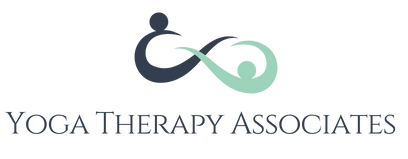By Christine Saari, MA, C-IAYT
Have you ever noticed how most of us hardly think about our noses until an issue arises? Yet our nasal passages often remain an unsung hero in the symphony of our daily activities. Now consider this: did you know that your nose has a natural rhythm, a choreography of breath known as the nasal cycle, where one nostril takes the lead and then gracefully hands over the baton to the other about every four hours?
This silent partnership in respiration, known as the nasal cycle, has intrigued researchers since the late 19th century when German physiologist Richard Kayser first documented its alternating airflow patterns between the left and right nostrils. Despite our knowledge of the nasal cycle spanning well over a century, there’s still much to uncover about its therapeutic potential, particularly in the realm of breathwork.
Yoga therapists collaborate with neurologists and healthcare professionals to explore ways to leverage the benefits of nasal breathing for neurological conditions. As we explore the nuances of Yogic nasal breathing, we begin to unpack the impacts of nostril dominance, the benefits of bilateral nasal stimulation, and the effects of tailored nasal breathing practices on autonomic nervous system function.
Learn how yoga therapists customize therapeutic nasal breathing techniques to the needs of individual patients with neurological conditions including stroke, brain surgery, traumatic brain injury, and psychogenic conditions.
Key Points
- Nasal breathing is vital for respiratory and cardiovascular health, with potential therapeutic applications for neurological conditions.
- Yoga therapists customize nasal breathing techniques for individuals with neurological issues, promoting respiratory efficiency and overall well-being.
- Nasal breathing has direct effects on brain function, optimizing responses to fear and influencing brain hemisphere activation.
- Chronic mouth breathing and nasal dysfunction impact health, making intentional nasal breathing a complementary therapeutic approach.
- Yoga therapy, incorporating nasal breathing, proves beneficial for stroke rehabilitation, brain surgery recovery, traumatic brain injury, and psychogenic conditions.
- A case study demonstrates the transformative impact of nasal breathing in yoga therapy for a patient with Multiple Sclerosis and Neurogenic Bladder Dysfunction.
- Neurologists are encouraged to consider nasal breathing practices as a complementary approach for enhancing cognitive function and managing anxiety in various neurological conditions.
The Science Behind Nasal Breathing
Nasal breathing serves as a multifaceted physiological process that extends beyond mere respiration, influencing various aspects of our health, particularly in the realm of brain function. Understanding the intricate effects of nasal breathing involves delving into respiratory protection, filtration mechanisms, and its direct impact on neurological function.
The Mechanical Benefits of Nasal Breathing
Cilia: The Guardians of the Airways
Nasal breathing serves as a crucial frontline defense mechanism, safeguarding respiratory health by preventing the direct entry of harmful pathogens and foreign particles. The nasal passages feature efficient filtration mechanisms that actively remove these threats from the inhaled air. Tiny hair-like structures called cilia within the nasal passages play a pivotal role in this defense system.
These microscopic guardians trap airborne particles, dust, and pathogens. Cilia use coordinated movements to sweep these captured elements away from the respiratory system and towards the exit of the nose. This process underlines the importance of nasal breathing in maintaining respiratory health through its dual role of protection and filtration.
The Nose as Your Personal HVAC System
Nasal breathing is not merely a passage for air; it also serves as a regulator of humidity levels. As inhaled air travels through the nasal passages, it undergoes a conditioning process. The nasal mucosa, a moist and vascularized lining, actively adds moisture to the air. This regulation of humidity is essential for optimizing respiratory function. Properly humidified air prevents the delicate tissues of the respiratory tract from drying out. This supports optimal function and minimizes the risk of irritation.
Temperature Control for Comfortable Breathing
Another remarkable feature of nasal breathing is its role in temperature control. The nasal passages, with their rich blood supply, help adjust the temperature of the inhaled air. In colder environments, nasal breathing warms the air. The introduction of warm air prevents the shock of inhaling extremely cold air directly into the sensitive lungs. Conversely, in hot conditions, the nasal passages aid in cooling the incoming air, contributing to the body’s overall thermoregulation.
Nasal Breathing for Oral Wellness
Nasal breathing proves superior to mouth breathing in fostering overall health, including critical aspects of oral well-being. Emphasizing proper tongue posture, nasal breathing actively contributes to maintaining correct alignment of the tongue and jaw, playing a pivotal role in oral and dental health. This alignment is associated with the prevention of dental issues, such as malocclusion.
Additionally, nasal breathing engages the olfactory system, enhancing the sense of smell and elevating the experience of aromas. This sensory involvement extends beyond smell, influencing taste perception and the overall enjoyment of food.
Furthermore, nasal breathing acts as a natural preventive measure against dry mouth, a condition often linked to mouth breathing. The adequate production of saliva, facilitated by nasal breathing, is crucial for oral health, actively preventing issues like tooth decay. In essence, the holistic benefits of nasal breathing extend to oral health, making it a preferable choice over mouth breathing for overall well-being.
The Respiratory and Cardiovascular Advantages of Nasal Breathing
Hello Nasal Breathing, Goodbye Neck Tension
Embracing nasal breathing not only enhances respiratory function, but also holds the potential to alleviate uncomfortable patterns of neck tension.
What does nasal breathing have to do with the neck? The answer lies in the way nasal breathing supports optimal respiratory function. Nasal breathing orchestrates a harmonious interaction between the diaphragm and accessory muscles.
A notable study, focusing on children with Mouth Breathing Syndrome (MBS), showcased a significant decrease in electromyographic activity in muscles associated with nasal inspiration, including the sternocleidomastoid, suboccipitals, and upper trapezius, after the treatment period1. This decrease indicates a reduced effort exerted by these accessory inspiratory muscles, highlighting a potential shift towards diaphragmatic dominance.
By prioritizing nasal breathing, you shift away from relying on your upper respiratory muscles and, instead, engage in diaphragmatic breathing, commonly referred to as belly breathing. This approach directs the breathing workload to the muscle it was naturally intended for, preventing the adoption of compensatory muscular patterns. As a result, you sidestep chronic stress on muscles originally designed for occasional assistance. This shift not only minimizes the overuse of accessory muscles, promoting optimized respiratory function, but it also emerges as a promising strategy for alleviating uncomfortable patterns of neck tension that may accumulate over time. Nasal breathing, in this context, acts as a holistic method to enhance respiratory efficiency and address associated muscular tensions for improved overall well-being.
Nasal Breathing Introduces Nitric Oxide for Improved Cardiovascular Function
Have you ever thought about how you breathe and its impact on your heart health? Nasal breathing, where you deliberately breathe in through your nose and out through your mouth, turns out to be more than just a respiratory technique – it’s a heart-healthy practice too.
Nasal breathing, characterized by deliberate and measured inhalation, emerges as a key contributor to enhanced cardiovascular well-being. A recent study found that when people intentionally breathed through their nose, the resistance in their lung blood vessels decreased, making it easier for the heart to pump blood. The nasal passages play a pivotal role in the production of nitric oxide (NO). Nitric oxide is a potent vasodilator known for widening blood vessels. A study in Acta Physiologica Scandinavica even explored how nasal breathing affects patients after heart surgery. It revealed a drop in pulmonary vascular resistance index (PVRI) during nasal breathing compared to mouth breathing2.
This intentional breathing pattern also ensures the efficient distribution of air within the lungs, promoting improved oxygenation of the blood, further supporting cardiovascular health. This heightened oxygenation is crucial for sustaining energy levels and supporting cognitive function.
Essentially, nasal breathing isn’t just a respiratory tactic. It actively contributes to cardiovascular health by modulating the tone of pulmonary blood vessels.
So, when you guide patients toward intentional diaphragmatic breathing through nasal techniques, you’re not just optimizing their respiratory function; you’re fostering a healthier heart rhythm too.
Direct Effects of Nasal Breathing on Brain Function
Examining single nostril breathing reveals the connection between each nostril and the opposite side of the brain, shedding light on the link between nasal breathing and neurological influence.
Nasal Breathing for Optimal Responses to Fear
Zelano et al. (2016) compared the impacts on brain function during mouth breathing versus nasal breathing in response to fear3. Notably, they found that when we breathe through our nose, key brain regions linked to smell, emotions, and memory, such as the piriform cortex, amygdala, and hippocampus, become more synchronized, particularly during inhalation. Mouth breathing, in contrast, weakens this connection. Nasal breathing was found to optimize responses to fear-inducing stimuli, including enhanced memory recall, compared to mouth breathing.
These findings suggest a correlation between nasal breathing and beneficial synchronicity in brain function, highlighting potential cognitive advantages associated with nasal breathing.
Single Nostril Breathing and Opposite Brain Hemisphere Activation
Shannahoff-Khalsa’s early research on the nasal cycle using electroencephalograms (EEG) demonstrated that unilateral nostril breathing (UNB) enhances activity in the contralateral hemisphere4 . This research validated the traditional Yogic perspective, establishing a connection between the right nostril and the left hemisphere of the brain, as well as the link between the left nostril and the right hemisphere of the brain.
Nostril Dominance and Autonomic Nervous System Function
Singh et al. (2016) further explored the direct impact of unilateral nasal breathing on brain activation. It showed that right nostril breathing induces a significant increase in oxygenated hemoglobin (oxyHb) and total hemoglobin in the left prefrontal cortex (PFC)5. This finding suggests that right nostril breathing produces heightened blood flow and a stimulating effect on the left hemisphere of the brain. Conversely, left nostril breathing was associated with decreased oxyHb in the right PFC, indicating a potential deactivation or relaxing effect.
Singh’s research aligns with ancient Yogic wisdom, which posits a similar effect through the understanding of the ida and pingala energetic channels, where right nostril breathing stimulates, and left nostril breathing calms.
Imran Khan Niazi’s recent research investigates the hypothesis that right nostril breathing heightens activation of the sympathetic branch of the autonomic nervous system, while left nostril breathing amplifies the parasympathetic branch6. The results provide a nuanced set of insights. They affirm the unique neurological effects of right versus left nostril breathing, opening avenues for a more nuanced comprehension and potential exploration in neurological clinical applications.
Nasal Cycle and Brain Hemisphere Dominance Shifts
A natural nasal cycle governs airflow dominance in one nostril for a specific period before seamlessly switching to the other. Kahana-Zweig et al. (2016) elucidate this cycle, emphasizing its connection to shifts in dominance between the two brain hemispheres7. This cycle, approximately 2 hours when awake and doubled during sleep, showcases the dynamic interplay between nasal breathing and brain hemisphere activity.
Accumulating evidence spanning decades suggests a connection between nasal airflow asymmetry and brain asymmetry. The research indicates a potential correlation between cerebral hemisphere dominance and nostril dominance 8,9. This discovery offers additional understanding of the therapeutic possibilities of nasal breathing for neurological conditions related to atypical hemisphere dominance.
Furthermore, for neurological conditions with a psychological origin, where increased sympathetic nervous system dominance is a factor, investigating the advantages of nasal breathing may provide additional treatment options.
Bilateral Brain Stimulation Through Alternate Nostril Breathing
Yoga therapists utilize various nostril breathing practices to facilitate bilateral brain stimulation. They integrate not only nasal breathing, but also purposeful movements and postures. The combination of controlled nasal breathing with intentional bodily movements creates a synergistic effect. This approach facilitates the re-entrainment of the brain’s customary neuromuscular patterns.
Practices such as alternate nostril breathing serve as a reset for the brain. They do so by disrupting established learned patterns and establishing new intentional ones that support healthy nasal breathing and a balanced nasal cycle. This holistic approach contributes to the restoration of optimal autonomic nervous system function, fostering new experiences that enhance overall well-being and neurological balance.
In Summary: A Literature Review on the Quality of Clinical Trials Investigating Alternate Nostril Breathing
A comprehensive review of clinical trials on alternate nostril breathing conducted in 2017 found that there is high-level evidence supporting positive outcomes for the autonomic nervous and cardiopulmonary systems10. Additionally, there was substantial evidence indicating cognitive function improvement with regular practice. However, the authors suggested that further clinical trials are needed to assess its effects in specific clinical populations and establish optimal frequency and duration parameters for maximum efficacy.
The Hidden Dangers of Chronic Mouth Breathing and Breath Dysfunction
We have seen that nasal breathing plays a pivotal role in overall well-being, influencing various aspects of health. Deviations from typical breath function can have adverse health effects, including those associated with mouth breathing and other patterns of breath dysfunction.
Mouth Breathing: A Form of Breath Dysfunction
Chronic mouth breathing can have profound consequences, affecting respiratory function and overall health. Conditions like a deviated septum or nostril blockage can also obstruct airflow, with chronic issues exacerbating the impact.
Nasal Blockage
Deviated septum, congestion, and nostril blockage can seriously limit normal nasal airflow, causing immediate discomfort and potential long-term health issues. This persistent mechanical nasal obstruction may also impact mental health by disrupting the balance in brain hemispheres, influencing their function and overall integration into the body’s allostatic systems.
Specifically, a long-standing blockage in the left nostril can worsen symptoms. This is especially true when combined with conditions like generalized anxiety or panic disorders. Such a combination could lead to the overstimulation of the left hemisphere and the sympathetic nervous system, making it difficult to achieve a relaxed state for rest and digestion.
Signs of Breath Dysfunction
Recognizing such signs of breath dysfunction is essential. Additional signs may include frequent yawning, sighing, upper respiratory breathing, reverse breathing, breath holding, or shallow breathing. Patterns of breath dysfunction may indicate a need for improved breathing patterns to improve overall health.
Nasal breathing serves as a complementary therapeutic approach in addition to mainstream medical interventions in addressing such symptoms. Being aware of the impact of breath dysfunction empowers individuals to explore the potential benefits of intentional nasal breathing practices for enhanced health.
Yoga Therapy for Neurological Conditions
Yoga therapy, a specialized field within the broader domain of yoga, involves the application of yogic principles to address various health conditions, both physical and mental. As certified professionals in the field through the International Association of Yoga Therapists, yoga therapists work with individuals to tailor practices. These practices include breathwork, movement, meditation, and more.
Yoga Therapists Specialize in Correcting Breath Dysfunction
Yoga therapists specialize in correcting breath dysfunction by developing personalized approaches that integrate relaxation and awareness techniques. Through a tailored process, individuals receive customized guidance to restore proper breathing patterns, fostering optimal respiratory function and overall well-being.
Additionally, yoga therapists develop plans to address persistent mechanical issues that may not undergo immediate changes. Through a comprehensive and personalized approach, individuals receive guidance to manage and work with enduring mechanical challenges, promoting sustained improvements in respiratory health and overall well-being.
Nasal Breathing in Yoga Therapy
In the realm of yoga therapy, nasal breathing holds a significant place as a therapeutic modality. Yoga therapists often incorporate intentional nasal breathing practices to harness its potential benefits for neurological well-being. However, it’s essential to note that nasal breathing is just one component of the comprehensive approach employed by yoga therapists.
Yoga therapists employ a diverse range of nasal breathing techniques tailored to the individual, often directing the patient’s awareness to specific focal points. These practices, customized to meet various goals and medical considerations, encompass these and more:
- Alternate nostril breathing, with variations in ratios and nostril flow dynamics (nadi shodhana).
- Single nostril breathing (surya/chandra bhedana).
- Breath retentions and suspensions (kumbhakas).
- Nasal-glottal breathing (ujjayi breathing).
- Nasal hyperventilation at varying speeds (kapalabhati).
- Nasal breathing with a focus on specific respiratory muscle groups, including pelvic, diaphragmatic, intercostal, back body, and upper respiratory breathing.
The selection of a particular nasal breathing technique is intentionally determined by the yoga therapist based on the client’s goals and any medical considerations.
Nasal Breathing Applications for Neurological Conditions
- Stroke Rehabilitation: In early stroke recovery, yoga therapy incorporates controlled nasal breathing to improve cognitive and motor functions. Intentional breathwork supports neuroplasticity, facilitating the brain’s capacity to adapt and reorganize. Specific emphasis may involve cross-body or bilateral stimulation through coordinated nasal breathing and gross motor movement. This approach may emphasize neuromuscular repatterning with or without the use of targeted nasal breathing (with possible retention kumbhaka) for unilateral stimulation, tailored to the affected area of the brain.
- Brain Surgery Recovery: Following brain surgery, yoga therapy integrates nasal breathing practices to facilitate cognitive sharpness and information processing. The combination of controlled breathing and mindful movement supports the overall recovery process. Bilateral stimulation through alternate nostril breathing may facilitate recovery if there is medically-induced PTSD.
- Traumatic Brain Injury (TBI) Recovery: Yoga therapists leverage nasal breathing techniques to support neurological rehabilitation in individuals recovering from traumatic brain injuries. The intentional breathwork contributes to a holistic approach to healing.
- Psychogenic Conditions: For neurological conditions with suspected psychiatric origins, such as panic attacks, functional seizures, tremors, and psychogenic movement disorders, yoga therapy addresses symptoms through various modalities, possibly including controlled nasal breathing. The practices are customized after a comprehensive health assessment. The yoga therapist then creates a customized practice plan, taking into account the individual’s particular symptoms and diagnoses.
A Yoga Therapy Case Study: Nasal Breathing and Neurogenic Bladder Dysfunction
Background
Emily, a 42-year-old mother of two young children, had been living with the challenges of Multiple Sclerosis for 15 years. The onset of Neurogenic Bladder Dysfunction (NBD) became a distressing symptom, significantly impacting her daily life and emotional well-being. Fear of embarrassment and the limitations imposed by NBD restricted her activities, preventing her from enjoying outings with her kids and leading to isolation.
Intervention: Individual Yoga Therapy
Motivated by a desire to find relief and improve her quality of life, Emily began to explore options to support herself and her health. She heard about yoga therapy from a friend, and located a certified yoga therapist. The yoga therapist worked with her to design a home practice plan for daily use. The plan included specific nasal breathing practices such as alternate nostril breathing with diaphragmatic movement and coordinated pelvic muscular contractions, as well as deep relaxation techniques.
Transformation and New Lease on Life
Emily’s journey through the yoga therapy plan was nothing short of transformative. Learning and practicing nasal breathing during asana, forced nostril breathing, and alternate nostril breathing not only improved her physical symptoms but also provided her with a sense of control and confidence.
The fear of leaving her house due to the risk of involuntary leakage diminished. Emily found herself participating in activities she had long avoided. Trips to the trampoline park and the pool with her children became joyful experiences, free from the constant worry of bladder dysfunction. Even moments of laughter and coughing no longer triggered anxiety.
Emily’s newfound relief and confidence extended beyond the physical improvements. The introduction of the relaxation techniques became a cornerstone in her self care practice, empowering her mentally and emotionally.
Case Study Conclusion
This case study highlights the potentially profound impact of integrated yoga therapy as an adjunct to standard care for MS patients with Neurogenic Bladder Dysfunction. The significant improvements in bladder symptoms, coupled with the overall enhancement of quality of life, emphasize the potential of yoga therapy and nasal breathing as a valuable therapeutic intervention. This approach offers additional options for a client’s own care amidst the challenges of MS and its associated complications.
Neurologists, Consider Nasal Breathing for Holistic Patient Care
Incorporating nasal breathing practices from yoga therapy as a complementary approach holds promise for optimizing neurological well-being. Neurologists are encouraged to consider referring patients for breathwork therapy, recognizing its potential benefits for cognitive function and anxiety management in various neurological conditions.
Each client, with their inherently unique experience, may be impacted differently by a specific neurological condition. Nasal breathing’s targeted approach, modified based on a holistic assessment of individual symptoms, addresses their unique suffering, promoting personalized and effective therapeutic interventions.
About Us
Yoga Therapy Associates provides yoga therapy for individuals suffering from physical and mental chronic health conditions. Yoga Therapy Associates offers yoga therapy at four locations in Connecticut and via telehealth.
Are you interested in learning more about how yoga therapy can help you? It would be a pleasure to get to know you. Book a complimentary phone consultation today.
References
- Corrêa, E. C. R., & Bérzin, F. (2008). Mouth Breathing Syndrome: Cervical muscles recruitment during nasal inspiration before and after respiratory and postural exercises on Swiss Ball. International Journal of Pediatric Otorhinolaryngology, 72(9), 1335-1343. https://doi.org/10.1016/j.ijporl.2008.05.012
- Settergren, G., Angdin, M., Astudillo, R., Gelinder, S., Liska, J., Lundberg, J. O. N., & Weitzberg, E. (2002). Decreased pulmonary vascular resistance during nasal breathing: modulation by endogenous nitric oxide from the paranasal sinuses. Acta Physiologica Scandinavica. Advance online publication. https://doi.org/10.1046/j.1365-201x.1998.00352.x
- Zelano, C., Jiang, H., Zhou, G., Arora, N., Schuele, S., Rosenow, J., & Gottfried, J. A. (2016). Nasal Respiration Entrains Human Limbic Oscillations and Modulates Cognitive Function. The Journal of Neuroscience, 36(49), 12448–12467. https://doi.org/10.1523/JNEUROSCI.2586-16.2016
- Shannahoff-Khalsa, D. S. (n.d. circa 1990’s). UNILATERAL FORCED NOSTRIL BREATHING: Basic Science, Clinical Trials, and Selected Advanced Techniques. Subtle Energies & Energy Medicine, 12(2), 80. Retrieved from https://www.aipro.info/wp/wp-content/uploads/2017/08/Unilateral_forced_nostril.pdf
- Singh, K., Bhargav, H., & Srinivasan, T.M. (2016). Effect of uninostril yoga breathing on brain hemodynamics: A functional near-infrared spectroscopy study. International Journal of Yoga, 9(1), 12–19. https://doi.org/10.4103/0973-6131.171711
- Niazi, I. K., Navid, M. S., Bartley, J., Shepherd, D., Pedersen, M., Burns, G., Taylor, D., & White, D. E. (2022). EEG signatures change during unilateral Yogi nasal breathing. Scientific Reports, 12(1), 520. https://doi.org/10.1038/s41598-021-04222-2
- Kahana-Zweig, R., Geva-Sagiv, M., Weissbrod, A., Secundo, L., Soroker, N., & Sobel, N. (2016). Measuring and characterizing the human nasal cycle. PLoS One, 11(10), e0162918. https://doi.org/10.1371/journal.pone.0162918
- Werntz, D. A., Bickford, R. G., & Shannahoff-Khalsa, D. (1987). Selective hemispheric stimulation by unilateral forced nostril breathing. Human Neurobiology, 6(3), 165-171. https://pubmed.ncbi.nlm.nih.gov/3449485/
- Shannahoff-Khalsa, D. S. (n.d. circa 1990’s).
- Ghiya, S. (2017). Alternate nostril breathing: a systematic review of clinical trials. International Journal of Research in Medical Sciences, 5(8), 3273–3286. https://doi.org/10.18203/2320-6012.ijrms20173523




